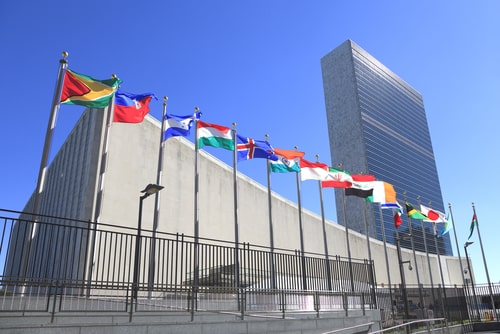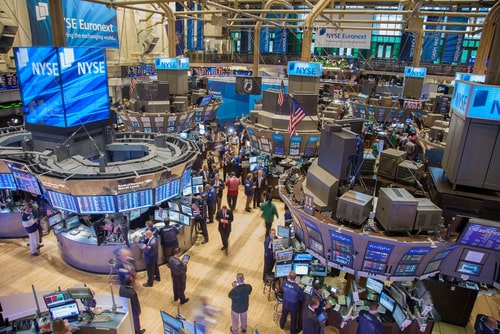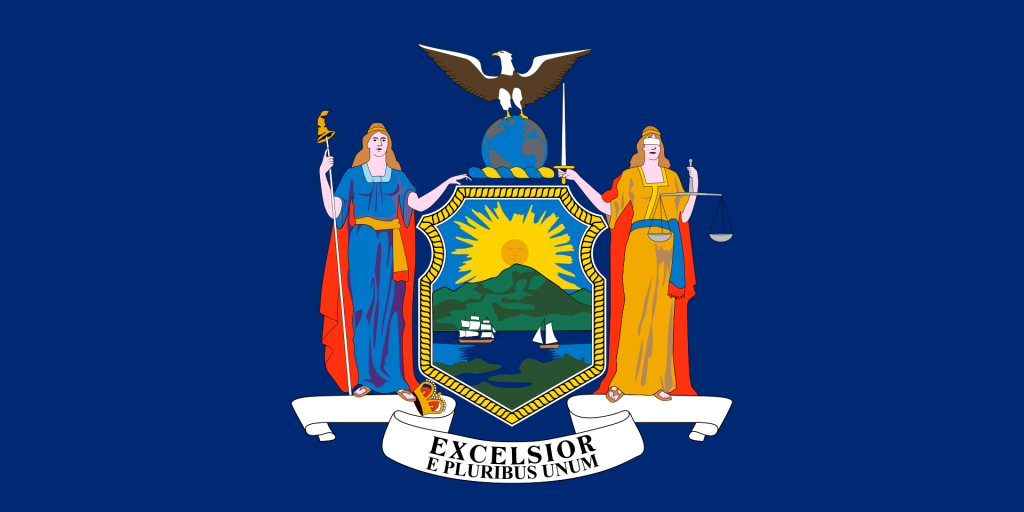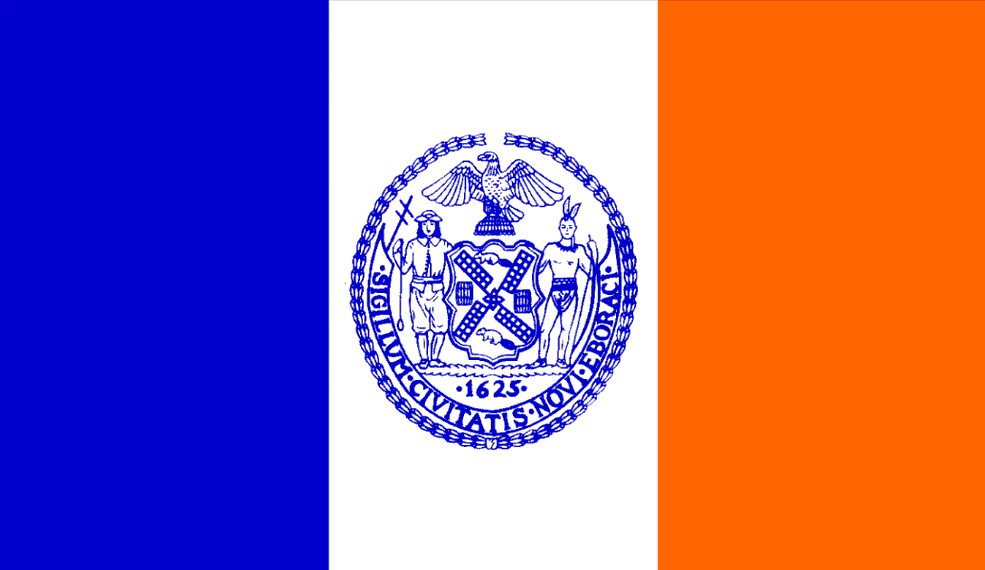Last updated on June 23rd, 2024
61. The Salt Museum in Liverpool, near Syracuse, showcases the history of salt production in the region and its impact on the local economy. The museum was opened to the public in 1993.
62. Landscape architects Frederick Law Olmsted and Calvert Vaux designed Central Park in Manhattan in 1858. The park spans approximately 843 acres and remains a significant green oasis in the heart of New York City.
63. The Naples Grape Festival in Naples, located in the Finger Lakes region, typically occurs annually in late September. This timing coincides with the grape harvest season, allowing locals and visitors to celebrate the region’s grape-growing heritage and enjoy various grape-related festivities.
64. The Apollo Theater in Harlem opened its doors on January 26, 1934. Since then, it has become a historic landmark and cultural institution, playing a pivotal role in developing and celebrating African-American entertainment. The Apollo has featured iconic performances by legends such as Ella Fitzgerald, Billie Holiday, and Michael Jackson.
65. The Tappan Zee Bridge, spanning the Hudson River, was replaced by the Governor Mario M. Cuomo Bridge, which opened in 2017. The new bridge incorporates modern engineering and design.
66. The Iroquois Confederacy, also known as the Haudenosaunee, is a historic confederation of Native American tribes. It played a significant role in the region’s early history and inspired aspects of the United States governmental structure.
67. The Catskill Mountains, located northwest of New York City, have been a popular retreat since the 19th century. The region is known for its scenic beauty and cultural significance in literature and art.
68. The Hudson River School, a mid-19th-century art movement, was centered in New York and focused on romanticized depictions of the American landscape. Artists like Thomas Cole and Frederic Edwin Church were prominent members.
69. Fort Ticonderoga, built initially by the French in 1755 as Fort Carillon during the French and Indian War, played a crucial role in both that conflict and the American Revolution. Captured by the British in 1759, the fort was later restored in the early 20th century and is now a popular historic site.
70. The United States got engaged in a military conflict with the British Empire between June 18, 1812, and February 18, 1815. The New York – Canadian border was the central front of the war.

71. The United Nations is headquartered in New York City.
72. New York was the first state to require automobile’s license plate in 1901. However, these plates were made by individual owners (with the owner’s initials) rather than being issued by state agencies. In 1903, the first state-issued license plates were distributed in Massachusetts.
73. Toilet paper was invented by Joseph Gayetty of New York City.
74. The first American chess tournament was held in New York in 1843.
75. In the Finger Lakes region, Seneca Falls was the site of the first Woman’s Rights Convention in 1848. It marked a pivotal moment in the women’s suffrage movement.

76. The New York Stock Exchange and NASDAQ both call the city their home. And mind you, these are the world’s two largest stock exchanges by total market capitalization of their listed companies. Big Board is a nickname for the New York Stock Exchange (NYSE).
77. Rochester was a major center for industry and innovation in the 19th and early 20th centuries. It was home to companies like Kodak, Xerox, and Bausch & Lomb.
78. New York State’s Liberty Island, where the Statue of Liberty is set, is home to the first hospital in the country. The hospital was opened on the island to house the immigrants who were considered physically unfit and too ill to enter the country.
79. The Hall of Fame for Great Americans, located at Bronx Community College, honors prominent Americans and was the first hall of fame in the United States. It opened in 1900, celebrating the achievements of noteworthy individuals in various fields.
80. The Stonewall riots in 1969, sparked by a police raid on the Stonewall Inn in Greenwich Village, marked the beginning of the LGBTQ+ rights movement.
81. Fiorello La Guardia, acclaimed as one of the greatest mayors in American history, was born in New York City, New York. He was the 99th mayor of the city. LaGuardia Airport is named after him.
82. In 1967, artist and engineer Charles F. Forbell built a cathedral in Albany entirely out of cardboard. It was named the “Cardboard Cathedral” and was a temporary installation.
83. The famous illusionist Harry Houdini, whose grave is marked with a large granite monument featuring an eternal flame in Machpelah Cemetery in Queens, died on October 31, 1926.
84. George Eastman, the founder of the Eastman Kodak Company, was born in Waterville, New York. He popularized the use of roll films, which later became the basis for the invention of motion picture film stock in 1888.
85. Benton MacKaye, a forester and planner, proposed the idea of the Appalachian Trail, which stretches from Georgia to Maine. The trail’s first section was completed in Harriman State Park, New York, in 1923.
86. Did you know that a 16-year-old named Keron Thomas hijacked a train and drove it for three hours before being arrested? Before he hijacked the train, he studied the MTA manuals and planned for months. More than 5 million people ride the New York City subway every weekday.
87. The 369th Infantry Regiment, known as the Harlem Hellfighters, served with distinction in World War I and spent more time in combat than any other American unit. France awarded them the Croix de Guerre.
88. The Attica Prison Riot in 1971 saw inmates taking control of the prison to protest inhumane conditions. The state’s response was controversial, resulting in numerous deaths and injuries.
89. The historic Grumman Studios in Bethpage, Long Island, was originally built during World War II as a manufacturing plant for Grumman Aircraft. After serving its wartime purpose, the facility was repurposed and transformed into a film and television production studio.
90. Whitehall is considered the “Bigfoot Capital of the East” due to reported sightings. In 1976, the town produced “The Legend of Bigfoot,” a film exploring the creature’s folklore.
About the Flag of New York State

1. Design and Symbolism
The flag of New York features a coat of arms on a blue field. At the center is a shield painted with a landscape of Hudson Bay. Two ships sail while the sun rises behind a mountain.
On the left is Liberty, depicted as the goddess of freedom holding a staff. She represents the liberation of the former colony from the English crown.
On the right is Justice, shown as a blindfolded woman with a sword and scale. She signifies readiness to fight tyranny and uphold equality.
At the top of the shield is an eagle perched on a globe looking at the west. Its wings spread wide as if preparing to fly.
At the bottom is a white ribbon with two Latin lines. The first line reads “Excelsior” or “Ever Upwards” as a call for progress. The second line is “E Pluribus Unum” or “Out of Many, One.” It is also a motto of the United States.
2. Adoption and Revision
The New York state flag became official on April 2, 1901. It was last modified in April 2020 to add the second motto.
3. Technical Details
The official proportion of this flag is 1:2, but there is a variant flag with a similar design and four stars sporting a 3:5 ratio. The latter is for the Governor of New York.
Some details are easy to miss, such as the Phrygian cap on the staff of Liberty. It originated as headwear for ancient Roman slaves who gained their freedom.
Look down at her feet. You will see a crown on the ground. It shows how low the monarchy has fallen in the region.
If you look closely, you will see that the sun in the shield has a smiling face. It is absent in some variants of the flag.
The ships have different designs and positions. The right one appears closer to the viewer.
The globe must show the North Atlantic Ocean and the shores around it.
4. History
In 1776, the US declared its independence. New York wanted to replace the Crown Seal of the British monarchy. They formed a committee to create a suitable coat of arms. Included in this group were the statesmen Gouverneur Morris, John Jay, and John Sloss Hobart. In 1778, they made a design featuring a rising sun and the motto “Excelsior.”
The image was continuously refined until 1896 when the coat of arms was placed on the state flag and formally approved. That flag had a light brown-yellow background, which changed to blue in 1901. No further modifications were made until 2020 when the state added the second motto, “E Pluribus Unum.”
5. Other New York Flags
From 1901-2020, an alternate design featured a faceless sun and a darker eagle.
Despite the change in 2020, older flags without the new motto remain widely used.

New York City has a separate flag with vertical tricolor bands: blue, white, and orange. The city seal at the center reveals close historical ties with The Netherlands.
New York State – quick facts and state symbols
| State Abbreviation | NY |
|---|---|
| State Capital | Albany |
| Largest city | New York City |
| State Size | Total (Land + Water): 54,556 sq miles; Land Only: 47,214 sq miles |
| Population | 19,867,248 (Estimate July 1, 2024 from United States Census Bureau) |
| Statehood | July 26, 1788 |
| State Rank by population | 4 |
| State rank by date of fomation | 11th |
| State rank by area | 27th |
| Number of Counties | 62 Complete list of 50 states and number of counties in each |
| Demonym | New Yorker |
| Bordering States | Connecticut, Massachusetts, New Jersey, Pennsylvania, Rhode Island (water border), Vermont |
| Official Language | of U.S. states by date of admission to the Union |
| Religion | Christian - 60% Unaffiliated - 27% Nothing in particular - 17% |
| Highest Point | Mount Marcy, 5,343 ft (1,629 m) |
| Lowest point | Atlantic Ocean Sea level |
| Mean elevation | 1,000 feet above sea level |
| Length | 330 miles (530 km) |
| Width | 285 miles (455 km) |
| National Parks | None |
| Governor | Kathy Hochul (D) |
| Lieutenant Governor | Antonio Delgado (D) |
| Electoral Votes | 29 |
| State Motto | Excelsior (Ever upward) |
| State Nickname | Empire State |
| % Water | 13.5 |
| Nobel Prize Winners | John O'Keefe (Physiology or Medicine, 2014) Robert J. Lefkowitz (Chemistry, 2012) Alvin E. Roth (Economic Sciences, 2012) Roger Y. Tsien (Chemistry, 2008) Paul Krugman (Economic Sciences, 2008) George E. Smith (Physics, 2009) Peter A. Diamond (Economic Sciences, 2010) Frank Wilczek (Physics, 2004) |
| Famous People | Art Monk (Wide Receiver. Inducted in 2008) (Football Player) Craig Biggio (Baseball Player) Chris Mullin (Basketball Player) Joe Mullen (Hockey Player) Ben Stiller (Actor) Lady Gaga ( singer, songwriter, and actress) |
| Slogan | "I Love New York" (official) |
| State Insect | Ladybug |
| State Animal | Beaver |
| State Gemstone | Garnet |
| Fossil | Sea scorpion |
| State Fresh Water Fish | Brook trout |
| State Marine or Saltwater Fish | Striped bass |
| State Flower | Rose |
| State Bird | Bluebird |
| State Bush | Lilac |
| State Fruit | Apple |
| State Tree | Sugar maple |
| State Dog | Working Canines |
| State Muffin | Apple muffin |
| State Butterfly | Red-spotted purple/white admiral |
| State Reptile | Snapping turtle |
| State Shell | Bay scallop |
| Longitude | 71° 51′ W to 79° 46′ W |
| Latitude | 40° 30′ N to 45° 1′ N |
| Time Zone | Eastern Time Zone |
| Website | www.ny.gov |
| Area Codes | 212, 315, 347, 516, 518, 585, 607, 631, 646, 716, 718, 845, 914, 917 |
| Table last updated | May 10, 2025 |
. . . continue reading on the next page
